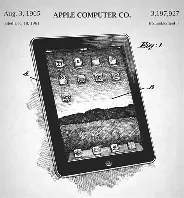History of Tablet Computers

1. Early Concepts (1960s – 1980s)
The idea of a tablet computer first appeared in science fiction. In 1968, computer scientist Alan Kay introduced the concept of the Dynabook, a portable, book-like computer with a flat screen and stylus input. Although the Dynabook was never built, it became an inspiration for future tablets.
In the 1980s, some companies experimented with pen-based computing. Devices like the GRiDPad (1989) were among the first commercially available tablets, but they were large, expensive, and limited in performance.
2. The PDA Era (1990s)
The 1990s saw the rise of Personal Digital Assistants (PDAs) such as the Apple Newton (1993) and PalmPilot. These small, handheld devices featured stylus input, simple apps for notes, calendars, and contacts, and could fit in a pocket. While not full tablets, PDAs introduced the idea of portable digital organization and pen-based input.
3. Microsoft and Early Tablet PCs (2000s)
In the early 2000s, Microsoft pushed the concept of Tablet PCs, laptops with touchscreens and stylus support running Windows XP Tablet PC Edition. Companies like HP and Toshiba released convertible laptops with swivel screens. These devices were powerful but bulky, expensive, and lacked optimized software, so they struggled to gain popularity.
4. The iPad Revolution (2010)
The real breakthrough came in 2010 when Apple introduced the iPad. Unlike earlier attempts, the iPad was slim, lightweight, had a large touchscreen, and ran a mobile-friendly operating system (iOS). It was intuitive, easy to use, and had access to thousands of apps. This launch transformed tablets into mainstream devices for entertainment, education, and productivity.
5. Android Tablets and Market Expansion (2010s)
Following Apple’s success, companies like Samsung, Lenovo, and Huawei entered the market with Android tablets. The Samsung Galaxy Tab series became one of the strongest competitors. Android tablets offered more variety in sizes and prices, making tablets accessible to a wider audience.
6. Productivity and Hybrid Tablets (Mid 2010s – Present)
Tablets began evolving from entertainment devices to productivity tools. Microsoft introduced the Surface Pro series, a hybrid tablet-laptop with detachable keyboards and Windows OS, blurring the line between laptops and tablets. Apple followed with the iPad Pro, featuring the Apple Pencil and Smart Keyboard, targeting creative professionals and business users.
7. Modern Tablets (2020s – Today)
Today, tablets are powerful computing devices capable of handling tasks once limited to laptops. They support advanced stylus input for drawing and design, multitasking, high-resolution displays, and 5G connectivity. Tablets are widely used in education, business, healthcare, and creative industries. Devices like the iPad Pro, Samsung Galaxy Tab S series, and Microsoft Surface remain at the forefront of innovation.
Recent Posts
ServerClub Tech
ServerClub Tech is your one-stop online store for smartphones, feature phones, tablets, and accessories. Discover the latest tech, enjoy unbeatable deals, and get fast, reliable delivery across Sri Lanka.


